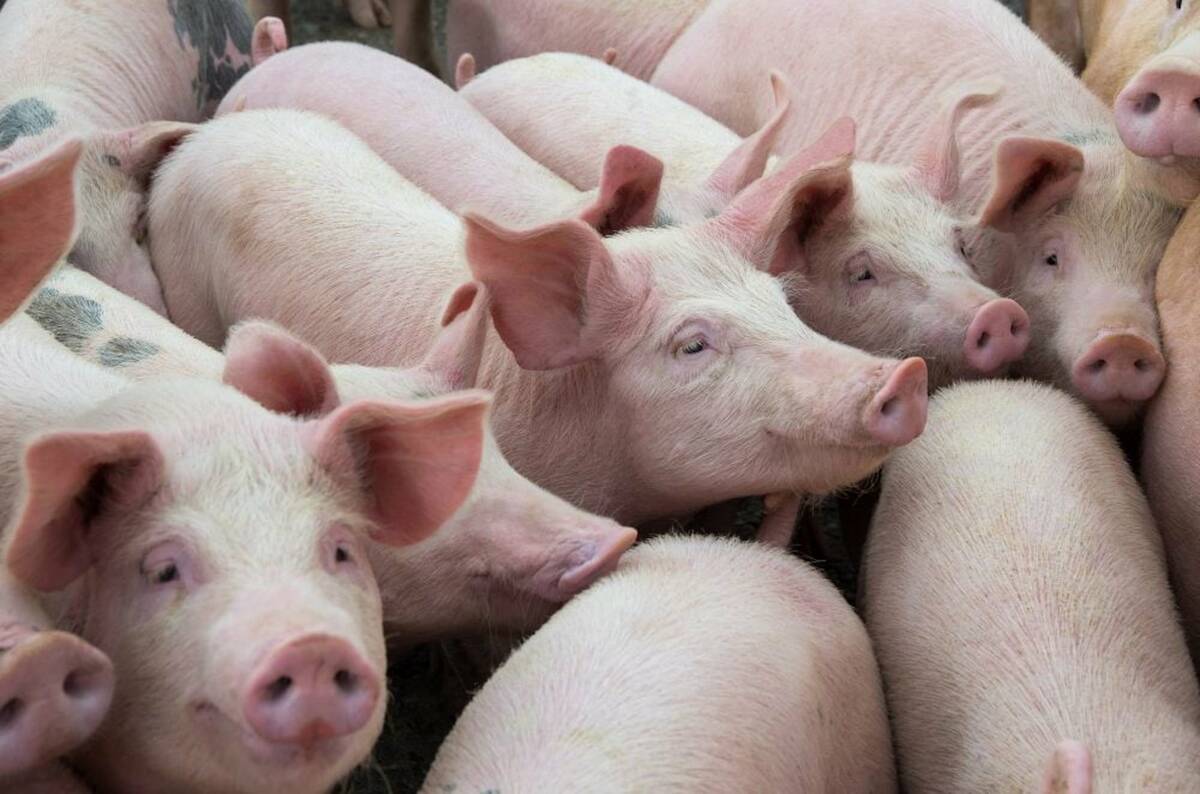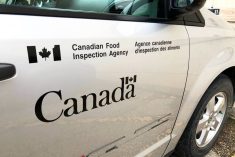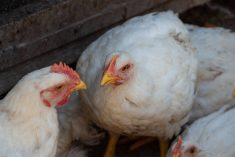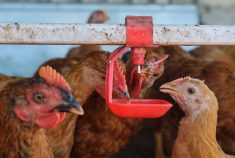REVISED, May 11 — Animal welfare considerations on a quarantined Alberta farm have led its owner to euthanize 500 of his 2,200 hogs.
Clearwater County hog producer Arnold Van Ginkel, consulting with federal and provincial animal health officials and the Canadian Food Inspection Agency, decided on “humane depopulation” as the best course of action for the welfar of the herd, the Alberta government said Saturday.
Van Ginkel’s entire herd has been under quarantine since the human H1N1 strain of influenza A was discovered in the herd late last month.
Read Also

U.S. livestock: Cattle rise, hogs recoup losses
Chicago live and feeder cattle futures rose on Tuesday while hog contracts regained Monday’s losses. Most-active February live cattle futures…
Due to the quarantine, he’s been unable to ship hogs to market and his farrow-to-finish operation has reached maximum capacity, the province said.
“We support this decision as a responsible animal welfare measure,” said Dr. Gerald Hauer, the province’s chief veterinarian, in a release Saturday. “This is not a human health issue. It addresses the inevitability of overcrowding while this farm remains under quarantine.”
The cull of about 500 market-ready hogs, including healthy and recovered animals as well as pigs with flu symptoms, took place under direction of provincial veterinarians.
The hogs will be “safely disposed of” once their carcasses have been rendered, and will not enter the food chain, the province said.
The infected herd will be released from quarantine once veterinarians have ruled that the H1N1 virus has run its course and all the farm’s animals are healthy.
“Our first priority has been to protect our family, our neighbours and our industry,” Van Ginkel said in a statement read by family friend John Middell at the farm’s gate Saturday evening and circulated by Alberta Pork, without mentioning the cull.
“We took immediate steps to make sure that our farm did not contribute to the spread of the disease and that the rest of our pigs are looked after.”
The virus, believed to be a combination of swine, avian and human flu strains, is presumed to have jumped to the hog herd from a carpenter who worked in the Van Ginkel barn after returning from Mexico.
“All of our family members have been tested. Our six children are safe,” Van Ginkel said. “This has been a very difficult time for our family and we will continue to work with the government to get through this.”
Having offered his statement, Van Ginkel asked the media to “respect the privacy of our family and our community now.”
Alberta Pork chairman Herman Simons said later that while the cull and the whole H1N1 issue has had a “huge impact on his (Van Ginkel’s) emotional state, overall he’s fairly strong and holding up pretty good. We’re very proud of him.”
“Thanks are also due to Van Ginkel’s neighbours and industry partners for their ongoing support of the Van Ginkel family,” Canadian Pork Council chairman Jurgen Preugschas said, “and for respecting and protecting the privacy of the family until they were ready to be publicly identified.”
“Underlying conditions”
As of Sunday afternoon, Alberta was home to 48 lab-confirmed human cases of H1N1. One of those, a woman in northern Alberta, died April 28 and was confirmed May 8 as having had the virus.
At the time of the woman’s death, it was assessed to be linked to chronic pre-existing medical conditions, the province said Friday.
After confirming May 5 that another family member had contracted a mild form of H1N1, local health care officials ordered further testing on the woman’s body and found May 7 that she had contracted the same virus.
The Public Health Agency of Canada, as of Sunday afternoon, considers the woman’s death to be Canada’s first H1N1-related death in this outbreak.
“It’s important to remember, as a larger public health issue, that every year, 4,000 Canadians die from the flu and a high percentage of them have underlying conditions that play a large part in making them susceptible to serious consequences when they get the flu,” Dr. Andre Corriveau, the province’s chief medical officer of health, said Friday.
“Situations like this are common and expected. It is not clear to what extent H1N1 may or may not have contributed to her death and it may never be clear.”
As of Sunday afternoon, the woman’s death remains Canada’s only H1N1-related death among 284 lab-confirmed cases of H1N1 across nine provinces, mostly in British Columbia (79), Ontario (76), Nova Scotia (56) and Alberta.
The World Health Organization (WHO), as of Sunday morning, had documented 4,379 confirmed cases of H1N1 in 29 countries, mostly in the U.S. (2,254, including two deaths), Mexico (1,626, including 45 deaths) and Canada. The only other country reporting a death related to H1N1 was Costa Rica, which had just eight confirmed cases.














